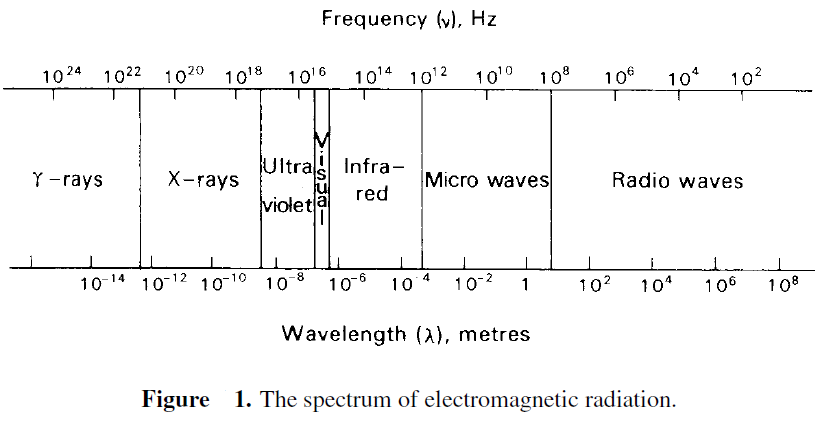
The wave nature of Electromagnetic radiation
 المؤلف:
A. Roy, D. Clarke
المؤلف:
A. Roy, D. Clarke
 المصدر:
Astronomy - Principles and Practice 4th ed
المصدر:
Astronomy - Principles and Practice 4th ed
 الجزء والصفحة:
p 19
الجزء والصفحة:
p 19
 12-7-2020
12-7-2020
 1989
1989
The wave nature of Electromagnetic radiation
The greatest quantity of information, by far, comes from the analysis of electromagnetic radiation. The word describing the quality of the radiation indicates that it has both electric and magnetic properties. As the radiation travels, it sets up electric and magnetic disturbances, which may be revealed by an interaction with materials on which the radiation impinges. In fact, some of the interactions are utilized in detector systems to record and measure the strength of the radiation. For these particular interactions, the energy present in the radiation is transformed into another form which is then suitable for a quantitative assessment.

Thus, any radiation has a strength which can be measured. Quantitative observations of this property can give us information about the source or about the medium through which the radiation has travelled after leaving the source.
Experiments in the laboratory have shown that all electromagnetic radiations have the same type of wave nature. When any radiation passes through a medium, its velocity is reduced by a certain fraction and the wavelength as measured within the medium also reduces by the same fraction. If v is the measured velocity and λ the measured wavelength, their relationship may be written as
v = νλ (1)
where ν is a constant of the particular radiation and is known as its frequency.
Thus, the electromagnetic spectrum covers an extremely wide range of frequencies. According to the value of the frequency of the radiation, it is convenient to classify it under broad spectral zones, these covering γ -rays, x-rays, ultraviolet light, visible light, infrared radiation, microwaves and radio waves. The spectrum of electromagnetic radiation is illustrated in figure 1.
The velocity of any electromagnetic disturbance in free space (vacuum) is the same for radiations of all frequencies. In free space, the fundamental parameter frequency, ν, is related to the wavelength, λc, of the radiation and its velocity, c, by the expression:
c = νλc. (2)
The velocity of electromagnetic radiation in free space has been measured in the laboratory over a wide range of frequencies and, in all cases, the result is close to c = 3 × 108 m s−1.
Wavelengths of electromagnetic radiation range from 10−14 m for γ -rays to thousands of metres in the radio region. At the centre of the visual spectrum, the wavelength is close to 5 × 10−4 mm or 500 nm. In the optical region, the wavelength is frequently expressed in A˚ ngstro¨m units (A˚ ) where 1 ˚A = 10−7 mm. Thus, the centre of the visual spectrum is close to 5000 A˚ .
If the strength of any radiation can be measured in different zones of the spectrum, much information may be gleaned about the nature of the source. In fact, it may not be necessary for measurements to be made over very wide spectrum ranges for the observations to be extremely informative. For example, as we shall see later, measurements of stellar radiation across the visual part of the spectrum can provide accurate values for the temperatures of stars. Partly for historic reasons, experimenters working in different spectral zones tend to use different terms to specify the exact positions within the spectrum. In the optical region the spectral features are invariably described in terms of wavelength; for radio astronomers, selected parts of the spectrum are normally identified by using frequency, usually of the order of several hundred MHz. By using equation (1), it is a simple procedure to convert from wavelength to frequency and vice versa.
If, for example, the wavelength of 1 m is involved, then its associated frequency is given by

 الاكثر قراءة في مواضيع عامة في علم الفلك
الاكثر قراءة في مواضيع عامة في علم الفلك
 اخر الاخبار
اخر الاخبار
اخبار العتبة العباسية المقدسة


